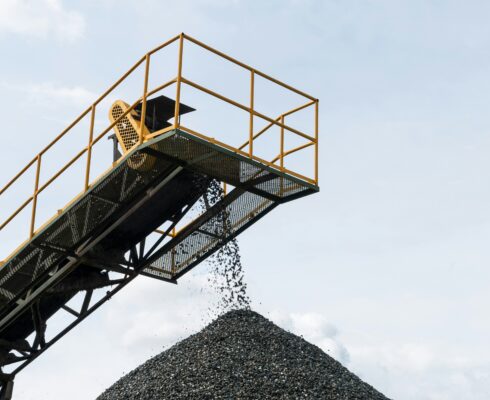From Ada Lovelace, widely acknowledged as the world’s first computer programmer, to Marisa Mayer, the first female engineer to join Google, women have made meaningful contributions to the fields of science, technology, engineering and mathematics (STEM). In Canada, as in much of the world, women are still underrepresented in these fields.
According to The Huffington Post, only 20 per cent of Canada’s post-secondary STEM students are female. The figures only marginally improve after graduation: in 2016, just 23 per cent of Canadian science and technology workers were women (up from just 20 per cent in 1987). Just 12 per cent of the country’s 280,000 engineers are women.
Needless to say, Canada has a long way to go to achieve equal gender representation in STEM. Why is this so important? TD’s 2017 report Women and STEM: Bridging the Divide identified the meaningful role STEM has to play in bridging the national wage gap, since positions in these fields generally pay higher salaries compared to other industries.
Mississauga-based environmental consultancy Ecometrix is one company which has worked hard to remove barriers and ensure female engineers and scientists have access to equal opportunity. In celebration of International Women’s Day, here’s a list of suggestions for STEM-related workplaces wishing to follow suit and promote gender inclusivity.
 Margarita Tzivaki, Environmental Modeller
Margarita Tzivaki, Environmental Modeller
 Rina Parker, Director of Assessment / Environmental Risk Assessment Specialist
Rina Parker, Director of Assessment / Environmental Risk Assessment Specialist
1. Make a deliberate decision to keep more women in STEM.
At Ecometrix, 46 per cent of all technical staff — consisting of both scientists and engineers — are women. Ecometrix believes the reason they’ve been able to successfully retain female scientists and engineers is because of a conscious decision to work towards their goal of a more gender inclusive environment.
“It is an absolute novelty for me to work with this many women on a scientific team. [It’s just the fact that they are] there in their capacity as scientists or engineers, doing their job, not being the minority for once. This place is full of role models,” says Margarita Tzivaki, Environmental Modeller.
In addition to providing a supportive environment for the women on their science and engineering teams, Ecometrix also works hard to ensure equal access and opportunity to leadership positions.
“When I started at Ecometrix 10 years ago, the leadership was made up of only men. However, this leadership team fostered a culture where I felt that there were no obstacles barring me from attaining a leadership role,” explains Rina Parker, Director of Assessment / Environmental Risk Assessment Specialist.
“I’ve had the amazing opportunity to serve as chairperson on the Board and have my voice heard in a significant way. Even when I went on maternity leave, I still maintained this leadership role with no questions asked,” she adds.
 Fei Luo, Environmental Engineer
Fei Luo, Environmental Engineer
2. Offer young female scientists and engineers mentorship opportunities.
As the adage goes, sometimes you need to see it to believe it. This is especially true when it comes to young women beginning their careers in STEM.
Camas Windsor, COO of Rangle.io, says, “It’s important for women to be able to look ahead and see examples of who she can be one day.”
It’s important to promote female scientists and engineers into leadership positions, but it’s also crucial to encourage senior employees to provide guidance and support to women in junior roles.
At Ecometrix, 71 per cent of senior staff are women. “This shows potential that Ecometrix could be a workplace for women in their early career to grow into a future leadership role,” says Fei Luo, Environmental Engineer. “Senior colleagues who have gone through the path of overcoming the challenges of being a woman in STEM. They provide great understanding and emotional support.”
Lynnae Dudley, Director Assessment, Environmental Scientist, agrees. “There are a number of strong female role models for our more junior staff to learn from — and every reason to imagine a long and rewarding career here,” Dudley says.
 Lynnae Dudley, Director Assessment, Environmental Scientist
Lynnae Dudley, Director Assessment, Environmental Scientist
I think STEM companies should actively work to balance their demographic to reflect the real world, and that means ensuring a strong proportion of women at all levels of the company and a mix of cultural backgrounds.
3. Remove the stigma of childcare in the workplace.
One significant challenge faced by women in and out of STEM is the rampant biases against mothers. The reasons for these biases range from common misconceptions that you can’t balance a family life and career to old school stereotypes about gender roles.
In STEM, it’s particularly bad: according to a 2019 study by PNAS (Proceedings of the National Academy of Sciences of the United States), 43 per cent of women leave full-time STEM employment after having their first child.
Ecometrix strives to fully support working mothers. For expectant mothers, this means listening to their needs, adjusting workloads and responsibilities prior to maternity leave, as well as facilitating re-integration after maternity leave. Ecometrix also provides flexible work days to all their staff, as well as the technologies needed to work remotely. They value work-life balance and don’t believe mothers should be penalized for their childcare responsibilities.
“I was away from consulting for many years when my family was young, and as you can probably imagine, I had many rejections when I started looking to renew my career in STEM,” Dudley recalls. “Ecometrix was different. They gave me a chance almost 12 years ago. I think that when you find a group of like minded people with the same passion for STEM, you can’t help but to be motivated.”
STEM organizations have an obligation to come together and support one another in eradicating gender bias and promoting a more inclusive workplace.
Happy International Women’s Day!









